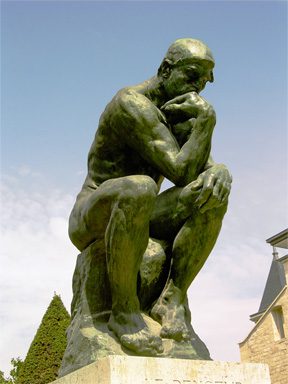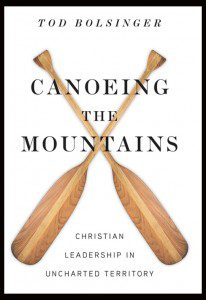A recent column in the New York Times begins this way:
What ignites the engine of creativity? A popular metaphor in American business urges you to think “outside the box.” Folk wisdom advises that problem-solving is helped by thinking about something “on the one hand” and then “on the other hand.”
Is there any psychological truth to such metaphors for better thinking? Our research suggests that the answer is yes. When people literally — that is, physically — embody these metaphors, they generate more creative ideas for solving problems.
 Here’s how the authors, Suntae Kim, Evan Polman, and Jeffrey Sanchez-Burks, explain what they mean:
Here’s how the authors, Suntae Kim, Evan Polman, and Jeffrey Sanchez-Burks, explain what they mean:
Recent advances in understanding what psychologists call “embodied cognition” indicate a surprisingly direct link between mind and body. It turns out that people draw on their bodily experiences in constructing their social reality. Studies show, for example, that someone holding a warm cup of coffee tends to perceive a stranger as having a “warmer” personality. Likewise when holding something heavy, people see things as more serious and important — more “weighty.”
However, until recently it was not known whether bodily experiences could help in generating new ideas and solutions to problems. Our research, which will be published soon in the journal Psychological Science, discovered that it can.
What might be some of the implications of this research?
By showing that bodily experiences can help create new knowledge, our results further undermine the strict separation between mind and body — another box that has confined our thinking for a long time. In addition, although we’re only starting to grasp how catchphrases shape how people think, it’s possible to begin prescribing some novel suggestions to enhance creativity. For instance, if we’re performing a job that requires some “outside the box” thinking, we may have to avoid working in cubicles.
This research confirms something I have experienced time and again in my life. When I am grappling with a particularly difficult problem, and especially when I’m trying to be creative, I find great help if I get out of my office and go for a walk. Something about getting out of my “box” helps me to “think outside of the box.”
I wonder what implications this research might have for organizations that seek to enhance the creativity of their members? I think especially of groups that tend to do their brainstorming in boxy conference rooms. Maybe their creative process would be enhanced if they took a walk together or intentionally moved to a new location.











